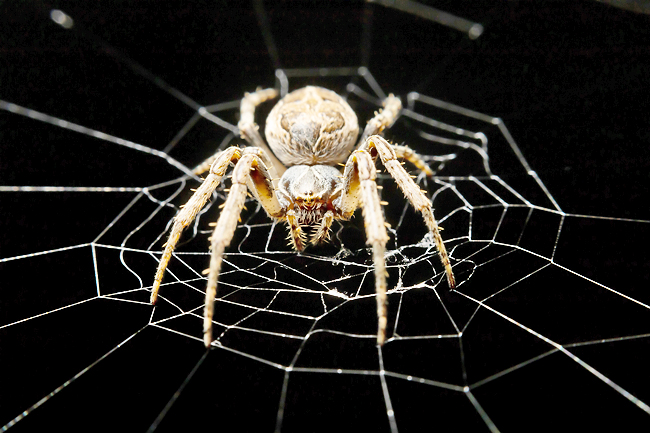Gina Rich
THE WASHINGTON POST – Imagine a tasty bug landing on the web of a hungry spider. How does the spider detect its prey?
Spiders don’t have ears like we do, and many have poor eyesight. But they can sense vibrations, like those that happen when an unlucky insect touches their webs.
And instead of eardrums, spiders hear using tiny, sensitive hairs that move in response to sounds.
Scientists recently learned that spiders can pick up sounds in another way: through their webs. “It’s basically using the web as the ear,” said Ron Miles, a professor of mechanical engineering at Binghamton University who researches acoustics (the study of sound) and vibrations.
In a new study, Miles and his co-authors found that spiders responded to sounds played near their webs.
Previously, the researchers had measured how a single strand of spider silk moved in response to sounds in the air.


They found that “the web silk itself is really good at detecting sound”, Miles said. That discovery prompted the question: could spiders use their webs to hear?
To study hearing in animals, scientists normally insert electrodes into the animals’ nerves and look for “spikes” that show a nervous system response, Miles said.
That’s tough to do in a spider. So instead of using electrodes, researchers placed orb-weaving spiders (the type that spin wheel-shaped webs) in a specially designed quiet room.
They tracked how the spiders reacted to different sounds played on a loudspeaker.
“We had to show that the sound was getting to the spider only because of the airborne path and it wasn’t coming through some vibration,” Miles said.
“And sure enough, the spider responded.” Depending on how loud the sound was, spiders crouched, stretched, turned or raised their forelegs.
Researchers noticed that the spiders turned their bodies toward the sound, suggesting the arachnids knew where the noise originated.
The ability to use a web like a giant extended ear could help spiders detect prey. If an insect is flying nearby, for instance, “that’s going to cause the web to vibrate because of the sound”, Miles said. “That kind of gets the spider’s attention.”
Spiders might even use their webs to tune in to a variety of sounds. “We suspect that the spider is actually able to sort of adjust the tension in the web in order to pick up certain frequencies,” Miles said.
Miles hopes the research on spiders will help us find better ways to detect sound. Most microphones today work by sensing pressure and turning it into an electronic signal.
But in the natural world, “spiders aren’t sensing pressure”, Miles said. “Most animals don’t hear that way; they sense the motion of the air.” Future microphones, like those used in hearing aids, could be designed with this in mind.
The next time you see a spider, Miles suggested, watch how it reacts to sounds, like your footsteps or a buzzing insect – though what those noises mean to the spider remains somewhat of a mystery. “Spiders don’t have good facial expressions,” Miles laughed. “It’s hard to read them.”







